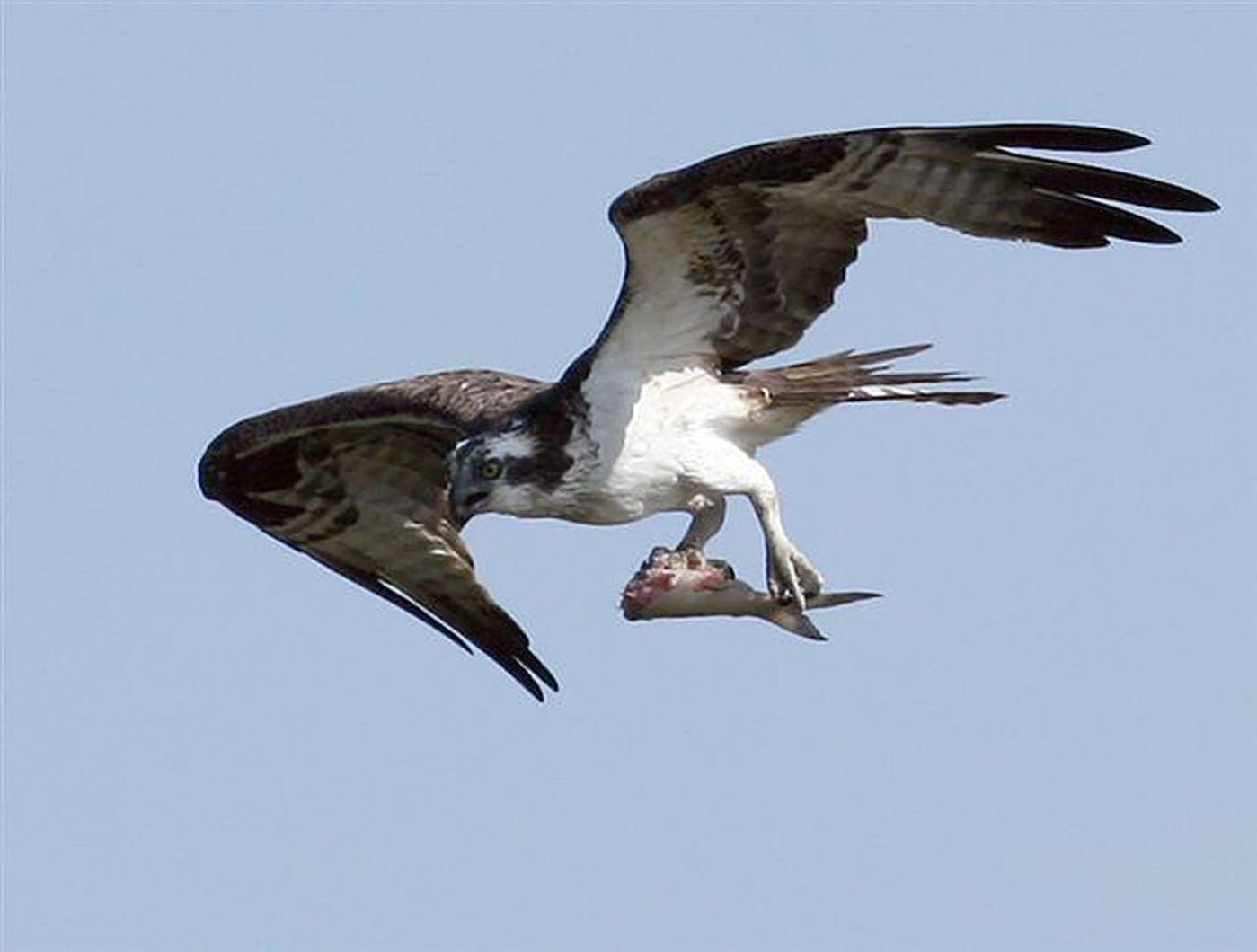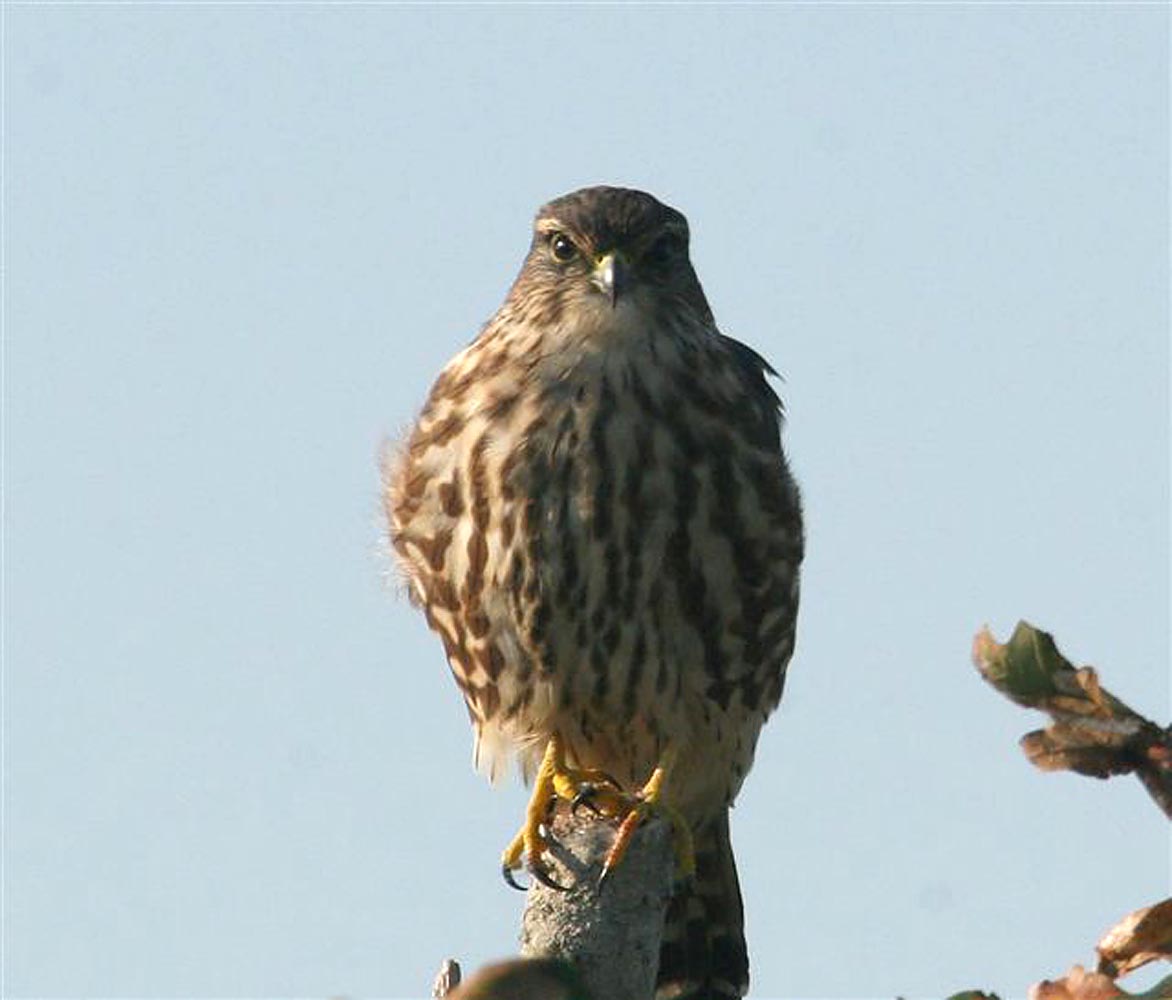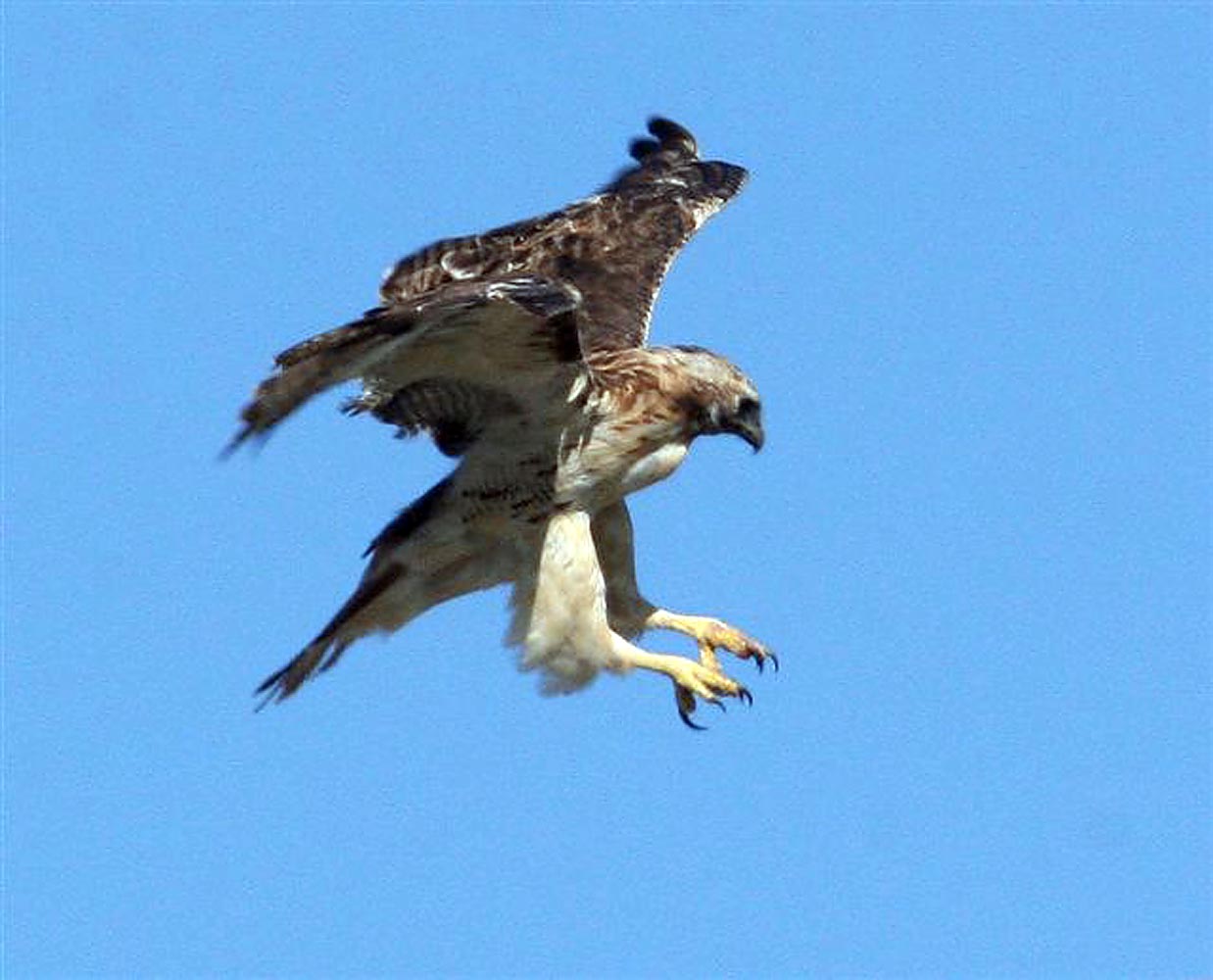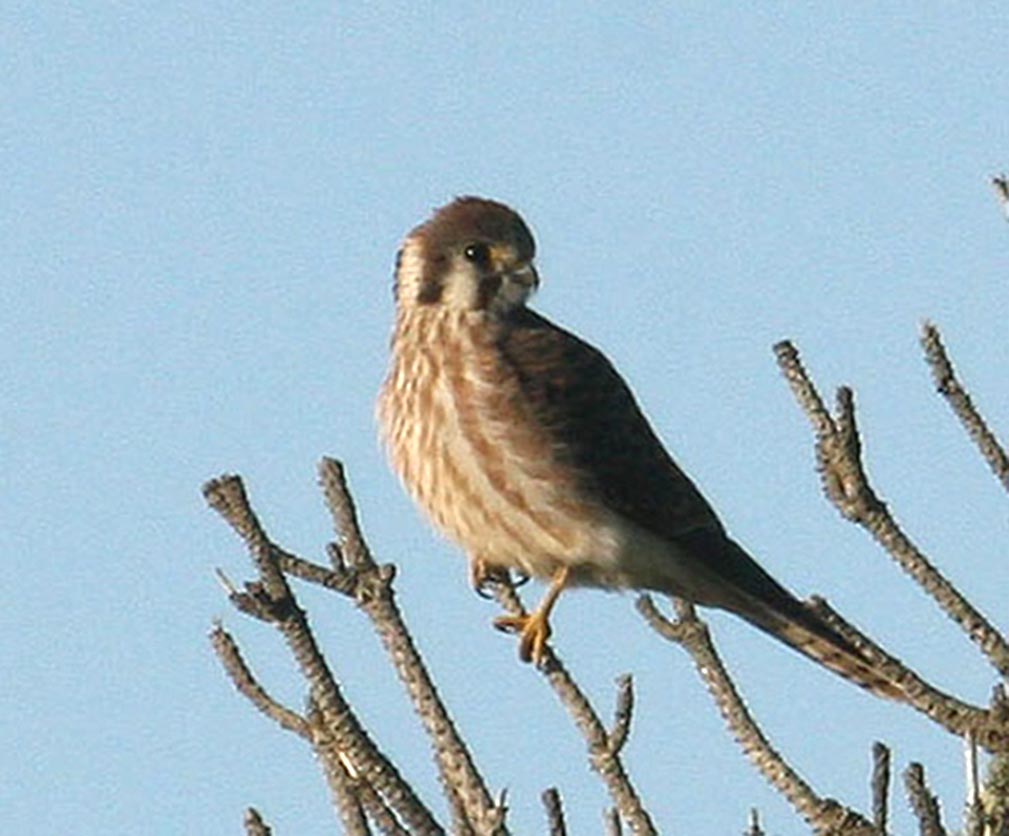Raptor. The name carries a lot of weight. So much velocity and ferocity are associated with it. In the bird world, the title refers to owls, hawks and eagles, vultures and the osprey.
The Vineyard has three owl species in summer and three or four more in winter. Three hawk species can survive here year-round. Almost any hawk species found in eastern North America might find its way here.
There are red-tailed hawks here in all seasons, the summering ospreys, the occasional winter-only rough-legged hawk and even wandering swallow-tailed kites. Soaring turkey vultures have become common sights; and every year pre-adult bald eagles glide into Vineyard skies, usually in the off-season.
In the fall, invasive breeds share the sky in transit, cruising the coastlines that funnel their avian prey southward on lengthy and risky migrations.
The accipiters, which ambush winged targets in forest lands, chasing them through bushes and raid bird feeders, include sharp-shinned hawks, Cooper’s hawks and the rarely encountered goshawk. They fly east to west over the Island in substantial numbers during fall, especially in October.
The most exciting group, falcons, are the wizards of the air, peerless flyers and experts at catching and dispatching other bird species in the open air. Kestrels are the more modest, as falcons go, taking smaller terrestrial prey; but merlins and peregrines are anything but modest. They are fast, competitive and aggressive. They are consummate negotiators of the high-speed pursuit, the last-second wheel, the steepest stoop.
Merlins have the most spunk, pestering all manner of other birds much larger than themselves which might presume to share the airways. Peregrines are the most powerful and the most respected. While other large raptors such as the goshawk, the gyrfalcon and the snowy owl are fearsome predators in Vineyard skies during the fall, the only serious competitor for a peregrine is another peregrine.
One recent morning a peregrine was observed winging out to sea beyond the Gay Head cliffs, then returning with a hapless songbird in its talons to ride unflapping in the rising current just above the bluffs, calmly plucking and consuming on the wing. The peregrine made three catches in about an hour. While there is no question that these raptor aerialists are dedicated to the capture of more vulnerable species, there is also considerable time devoted to what looks a lot less serious: play.
As the hawks move though Aquinnah, then out to sea, bound for Cuttyhunk, Noman’s, Block Island or Cape May, other birds tend to lie low. When merlins and peregrines are about, the worst thing other birds can do is take to the skies. It is a bad bet, and that’s one very good reason why most passerines are nocturnal migrants.












Comments
Comment policy »